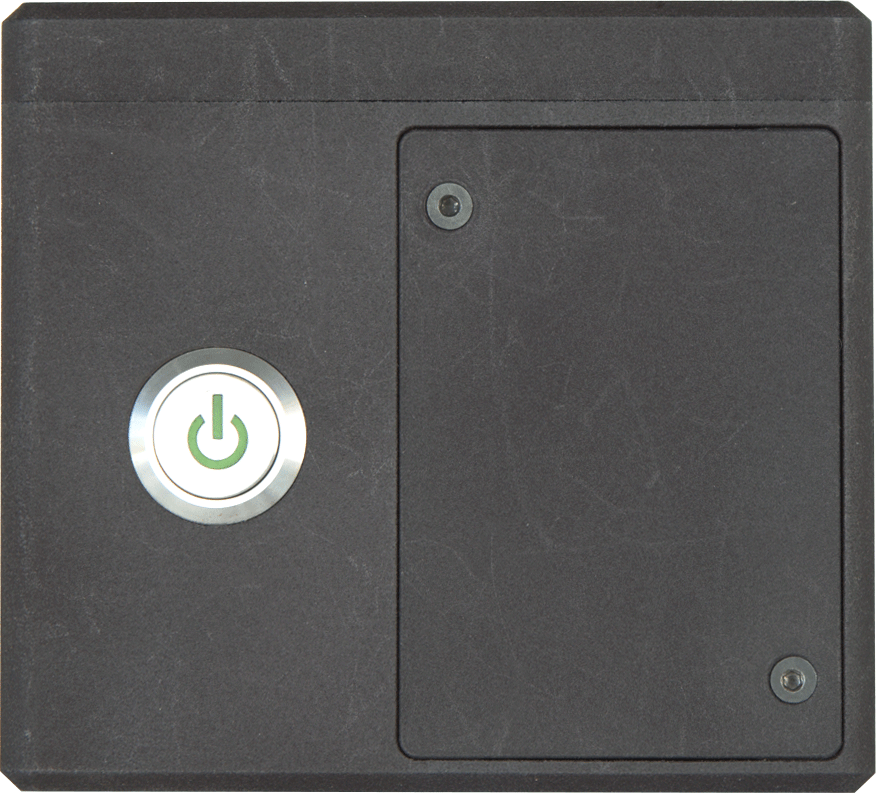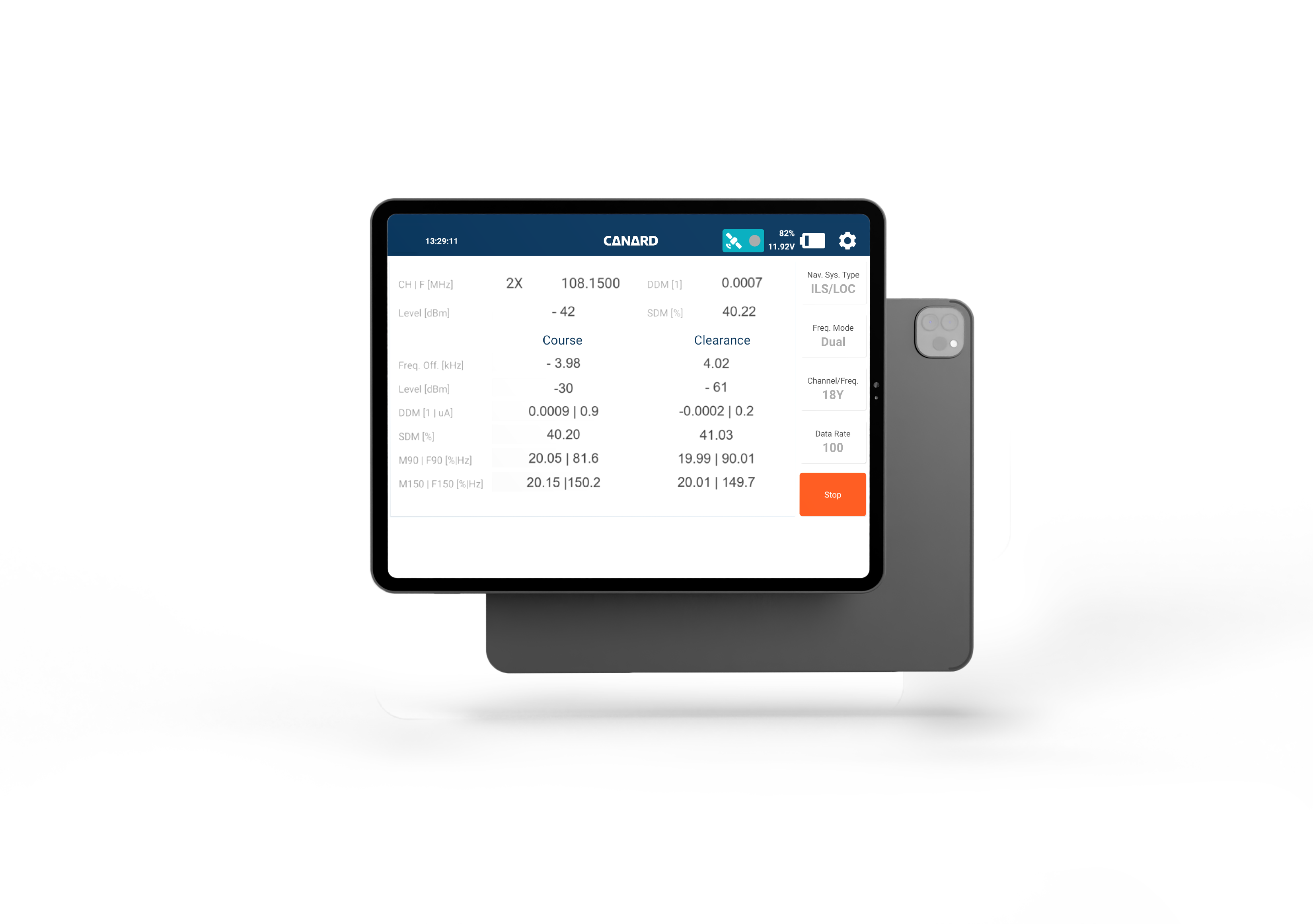

Wi-Fi connection with the PNA-200
The PNA-200 emits a Wi-Fi hotspot to which a tablet can connect with a huge range (more than 300m in open-air).
The tablet runs our CANARD App, which displays real-time data, remotely configures the device and provides access to the timestamped data-logs (.csv) that are stored in the PNA-200.
This connectivity also allows remote the quick update of the receiver SW and App when new versions are available.
User-friendly interface
Because the interface is built like any other mobile App, it is very intuitive and easy to use.
PNA-200 App requires no specific training or courses to operate it.
Besides that, the specific screens are designed to display and control all the useful parameters needed to check, calibrate and diagnose Radio Aids facilities.
Real-time data visualization
Besides keeping a log of the time stamped and geo-referenced (when GPS is connected) data, the PNA-200 provides real-time measurements to the App.
This means that the usercan move around with the tablet and visualize the data because the interface is not wired or embedded in the PNA-200.
